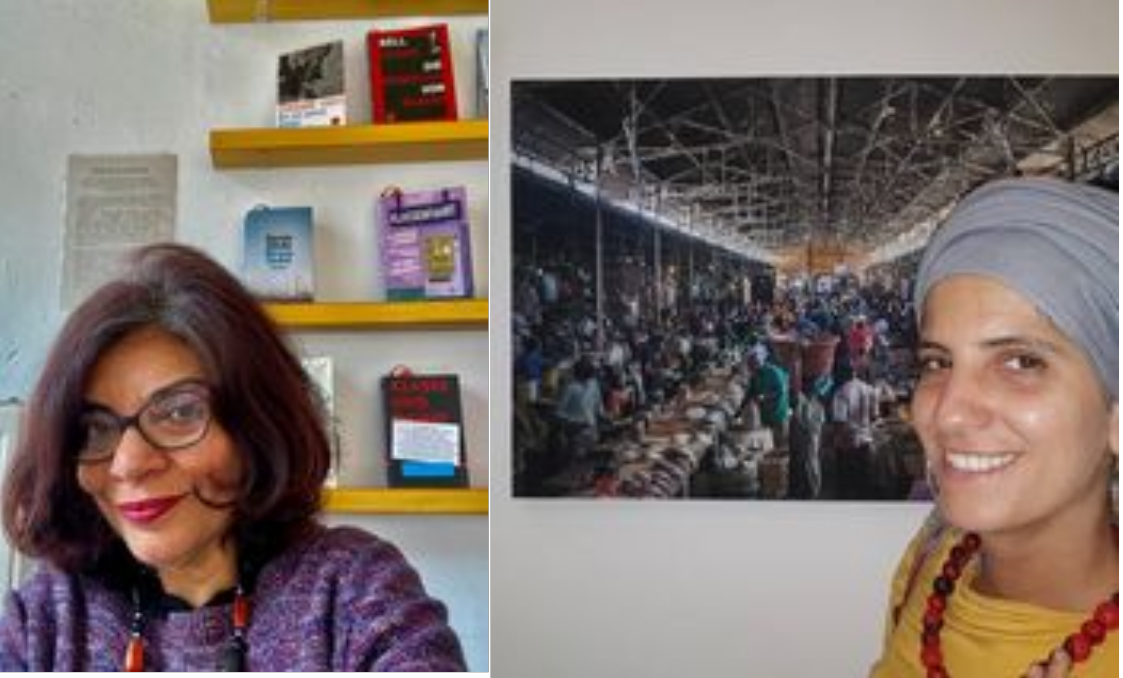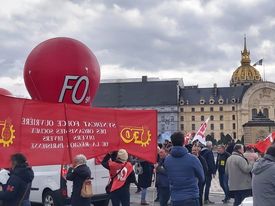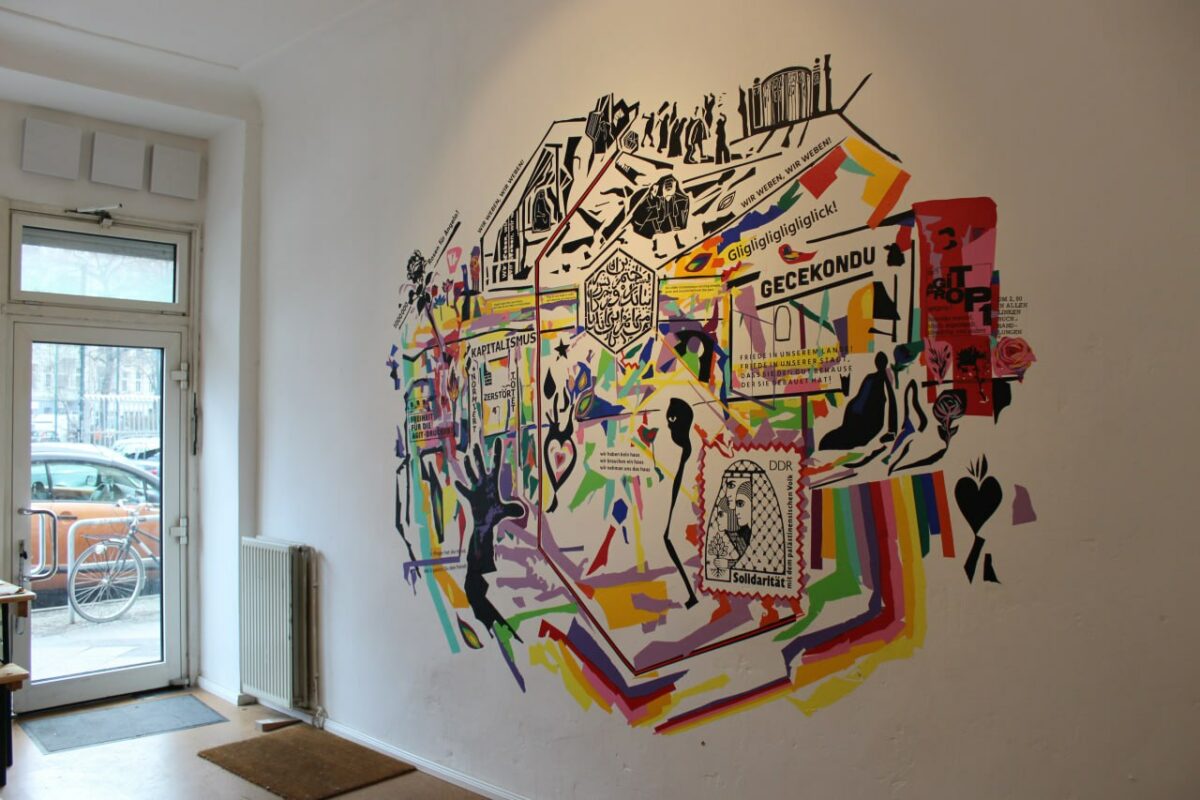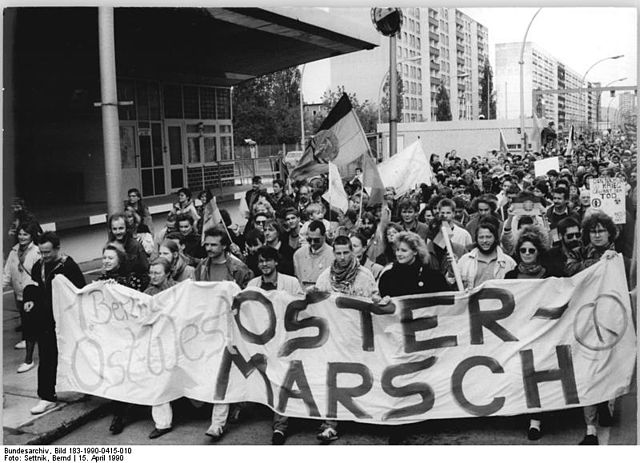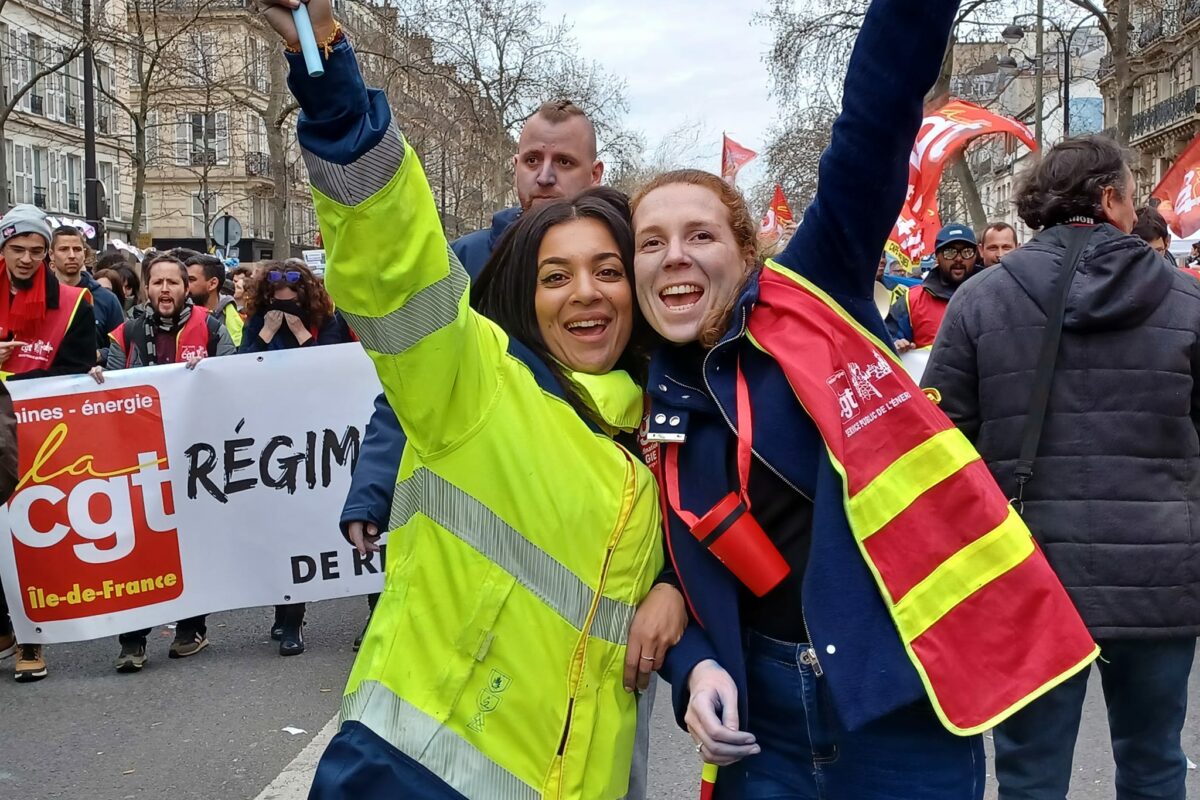Hi Fazila and Elettra. Thanks for talking to us. Could you start by briefly introducing yourselves?
Fazila (FB): I’m Fazila Bhimji. I’m in Berlin as a freelancer and independent scholar, I worked for many years in Britain at the University of Central Lancashire.
Elletra (EG): My name is Elettra Griesi. I’m an Italian living in Berlin since 2006 and in Germany for 25 years. I am an architect, but also a social and cultural anthropologist. I’m doing my PhD at Berlin’s Free University in the frame of which I ran an 8 month qualitative ethnographic research in Thiaroye sur Mer (Dakar, Senegal), the community we are engaging with during our event. I’m also spokeswoman at the Institute for Protests and Social Movements at the TU Berlin.
On Monday 17th April, you’re organising a workshop: From Senegal to Europe and Back. What will you be talking about, and why should people go?
FB: We met each other in Berlin at the community-based group, Kiez Kantine, and it turned out that we had both done research in Senegal. We look at migrants coming from Senegal to Europe, but also at the connection between richer countries plundering the seas and displacing lives. Many people in Senegal cannot see a future in fishing and are forced to migrate, both to Europe and to neighbouring states like Mauritania.
Fishermen in Senegal are what’s known as artisanal fishers. The have smaller boats. If they encounter the bigger trawlers, there are accidents and lives are lost. It’s the richer countries including China, Korea, France, and Spain, who are exploiting the seas and the traditional culture of fishing.
EG: This is one side of the story. The other side concerns their displacement and often ends up in deportation centres after their arrival in Europe, where obsolete practices are carried out, like the administering of sedatives to keep people calm, and holding them in cages before the deportation to their “countries of origin”.
Deported people then face several difficulties. They must integrate again into their communities. This is a very difficult step to make, since once you come back from Europe, you are considered as a loser. Going back also means not having anything any more. When you leave your country you give up everything. You have to start again from less than zero.
Now, around 2004-2005, people from Thiaroye sur Mer were starting to migrate to Europe in small fishing boats. There were several accidents, and hundreds of people died. European policies thus started to focus on migration management by running so-called development projects with the aim of creating employment opportunities and “stop migration”. The projects have as their focus groups “potential migrants” and “deportees” and all this contributes to attach this label to these people producing stigmatization within the community and further marginalization.
Normally the discourse about refugees in Europe is about Syria, and more recently Ukraine – it’s about people who are fleeing wars. In contrast, Senegalese refugees are fleeing poverty and the effects of colonialism. They are “bad refugees”. How does this affect the way they are treated?
FB: When Germany received Syrian refugees, Angela Merkel said “wir schaffen das”. There was no such rhetoric for people coming here because of the effects of neo-colonialism.
If you are from Africa or from countries such as Pakistan, the housing situation is really bad, and you’re rarely given refugee status – even in countries which are directly responsible for you being there. Fishers have to flee because there are no fish in the water. This is not just because of environmental reasons, but because countries such as Spain, China, and Korea are stealing fish.
The Senegalese government colludes with European states which are offered waters where the locals used to fish. They have bigger nets and equipment, and are able to fish more easily. This causes migration. When people come to Europe, they are treated very badly. People don’t make the connection that Europe itself is responsible for them. They’re just branded “economic migrants”.
EG: And so, people are usually deported because Senegal is still considered to be a safe country. In the eyes of European governments, there is no need to migrate. Even If you apply for asylum it is very difficult to get the status of refugee.
Plundering the Senegalese waters is one side of the problem. The other side is expropriation of land. At the workshop, we will introduce the community from Thiaroye sur Mer which came from Egypt in the 18th Century and settled in Dakar when it was still not urbanised. They were living from fishing and agriculture.
After Senegalese independence in the 1960s, the government started to take away their lands from them in order to develop the city of Dakar and build industrial buildings. Step by step they were expropriated. They had no land, on one side, and could not get fish from the sea on the other. This led to unemployment, and eventually displacement and migration.
FB: In the villages where I did my research, all the people I spoke to had the same response. They are very dissatisfied with the current government, which is in collusion with European states. They feel neglected.
You each just said something very interesting. Elettra said that national liberation didn’t improve the lives of many farmers and fishers, Fazila that the Senegalese government now colludes with the old colonisers. Does this mean that national liberation wasn’t worth it?
FB: Any kind of liberation is always worth it. But we cannot say that Senegal really got independence from France. It doesn’t have self determination. Even the CFA [Senegalese currency] is linked with the French Franc. They’ve had the same rate of exchange for decades.
People have been fighting against this. There have been some changes, or at least hope for change. There is a fight against neo-colonialism. Even Berlin has seen some solidarity events where West Africans have got together, and demonstrated in front of each other’s embassies. This is an ongoing fight.
My research has a decolonial approach, working with community activists in Senegal or from Nigeria. We were all people of colour working with the fishers. It is important that it wasn’t top down research. We are trying to find out people’s experiences from their own perspective.
EG: I would totally agree with what Fazila is saying, this approach is very important. We must decolonize knowledge and research in order to decolonize the mind and produce equity. As researchers, we should run research that includes the views and standpoints of the people. We must also ensure that no researcher has a higher position, and that research participants are not passive objects. Our research must take their perspectives into account. What do they need? Why should we research there? How can we help them to raise their voices and fight against neo-colonialism? In this way, we take a step towards decolonizing knowledge.
I also agree that Senegal is not really independent. Senegal tries and wants to be independent, but realizes that European powers are too strong to allow liberation. The government is somehow forced to adapt to the European policies in order to get some economic “benefits”, or to be included into development projects.
It is also important not just to talk about helping people, but to support their struggles. What sort of social movements are active in Senegal, fighting colonialism or putting pressure on the government to improve their situation?
EG: There are movements that are moving in this direction, but this is a new development. Until recently, there were almost no social movements fighting against the government. There was a musician group called Yen’a Marre who were activists from the start, but they were really an exception.
Otherwise, in Senegal people were not really used to protests. It was not in the mentality of the people to go on the street. Then, around 20 years ago, people started to become more aware. This process is developing right now. Organizations are also fighting for freedom of movement. This needs to be developed further.
FB: There’s also awareness raising. You can’t say it’s a social movement, but people have realized that this is a long fight and they need to be practical in the short run. There is a lot of work to be done with awareness raising, so people don’t take unnecessary risks trying to get to Europe, and end up drowning in the Atlantic.
There are associations which try to find work for younger people, so that they don’t end up taking the risk. And there is a Women’s Association for women who lost their sons. On the surface, it seems contradictory to the Left idea of free freedom of movement, but people should also have the right to stay. They should not be compelled to move. Their environment should be comfortable enough that they are not forced to take such desperate measures.
What conditions do people fleeing Senegal experience?
EG: There are different routes to reach Europe. Some people move via sea, others by land. It’s not a journey that you can do within one week. Sometimes it takes a month or even years to reach Europe, if at all. During this time, people are stuck in one place and need money to survive or continue their journey. They are forced to work illegally, for example in Moroccan call centres. And the call centres belong to Europeans. So they are working illegally for Europeans before they even reach Europe.
Those who have the luck of reaching Europe end up first in Welcome Centres, then in deportation centres, where they experience administrative detention for not being in possession of staying permits. After a period that differs from European country to European county (up to 6 months) they are either deported or they are released with an expulsion order, so that they mostly end up living on the streets with an illegal status. This forces them to work illegally. As they don’t have documents, they are held in slavery by the land owners for whom they are working. In most of cases, they are caught at some point by the police and put into deportation centres. After a period, they are – again – either deported or they end up on the streets, and the story starts all over. It is a never ending loop.
Let’s talk about your event on 17th April. Who will be there?
FB: Muhammed Lamin Jadama is part of Wearebornfree and helps awareness training in Senegal about the risks of migration. Moustapha Diouf who is the President of the Association of Young Repatriated in Senegal.
EG: There’s also an activist from Italy, Maurizio Tritto, who I’ve know since we were 4 or 5 years old. He’s really engaged in bringing social justice. In 2011, a Welcome Centre in my village was re-adapted into a deportation centre. There were protests which went on for several months, and after one or two years, the deportation centre was closed.
But every time that a new government came into power, the deportation centre was re-opened. Much money flowed in, the centre was closed again, and then a new government was elected. Maurizio never stopped protesting against the deportation centre. He went on hunger strike for two months last year to win attention for what was happening.
But nothing happened. The government would not speak with him or listen to him. This year, he started his hunger strike again, as conditions in the deportation centre were getting worse. People disappeared, people died, people were hold in cages, sometimes without food. He was on hunger strike for 66 days until he collapsed and had to stop. All his efforts went unnoticed, that’s why we invited him. He has very deep insights into this deportation centre.
FB: It’s not limited to Italy. At the old Schönefeld airport in Berlin, a deportation centre is being built, and there will be protests in July. The airport, which used to be a welcoming place for people, is now being used to deport people. The situation just gets worse every day.
One final question. We hope that everything goes well next week, but what happens next? Are you planning further events?
EG: I would really love to organize more events, like seminars in universities and other places which raise awareness among younger people. People just don’t know about the conditions concerning migration and displacement. I hear many times: “Why do they migrate from Senegal? It’s a safe country”. But what is a safe country?
I also heard people say “German agencies are putting so much money into development. So why do people keep on migrating?” We would like to show where this money is going, and what conditions the people in the origin countries are facing.
FB: For me it’s also important to somewhat raise awareness among the Left in Europe, which is mainly focused on freedom of movement. They fail to see the complexities that there are other battles to be fought, like neocolonialism or the plundering of the seas. We should ensure that countries of origin don’t become States which force people to migrate.
